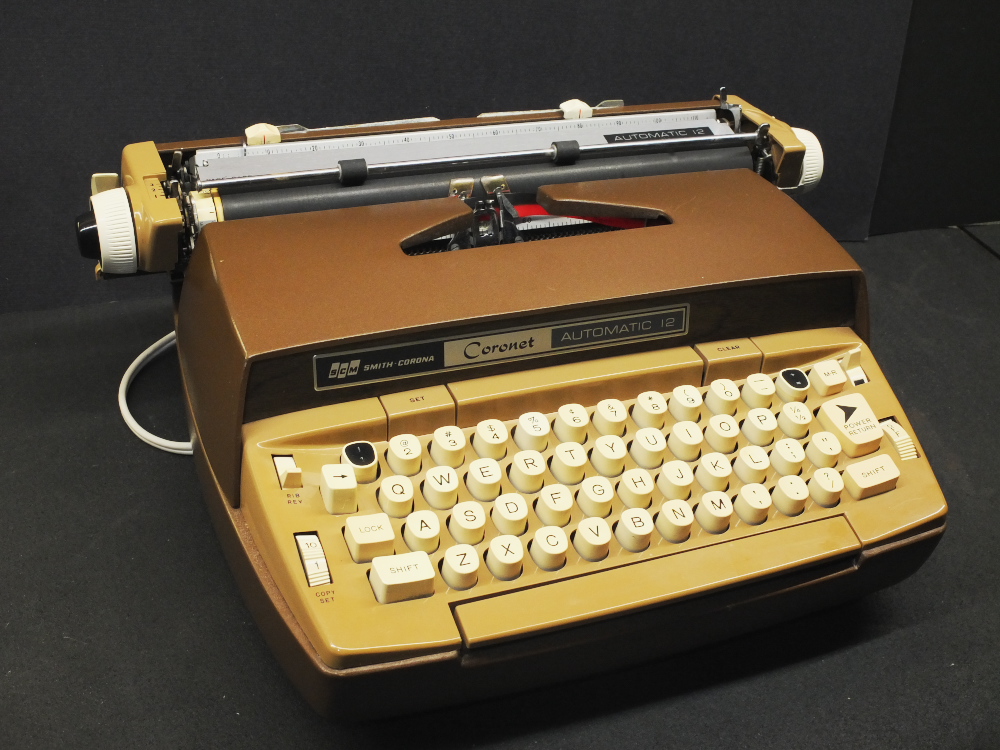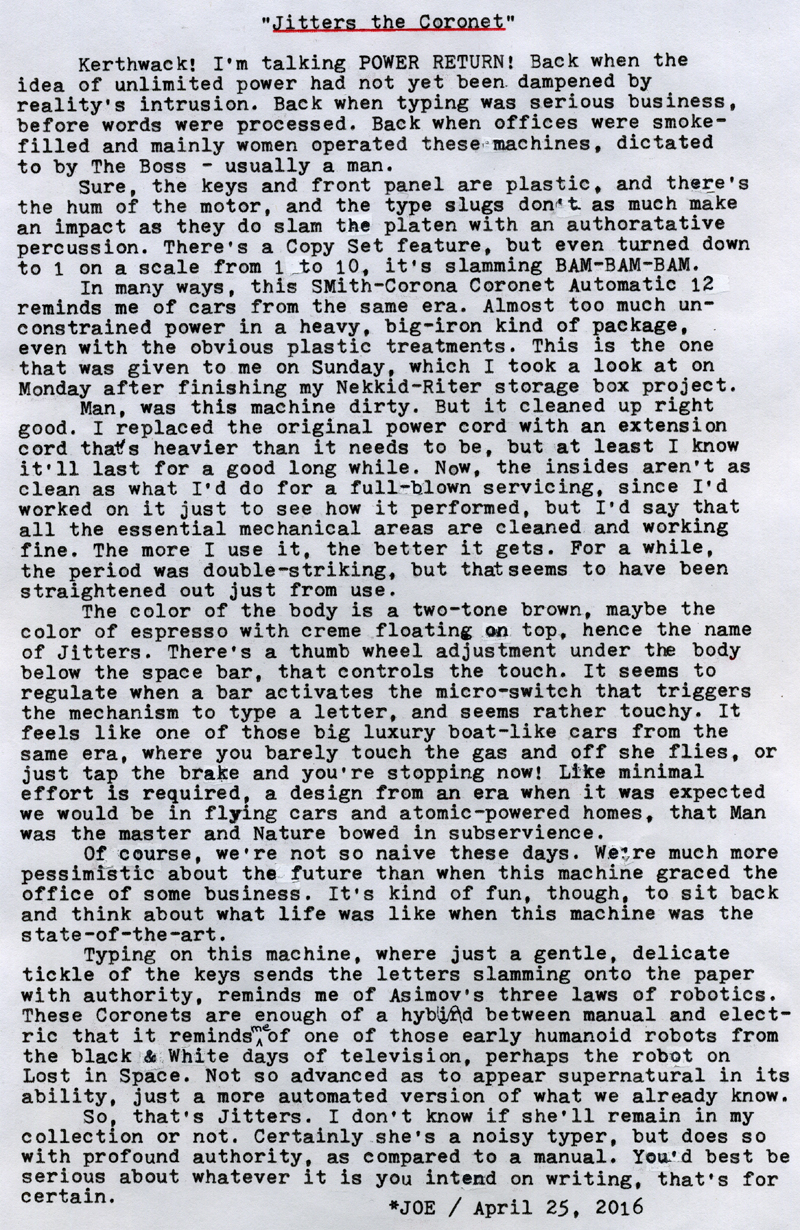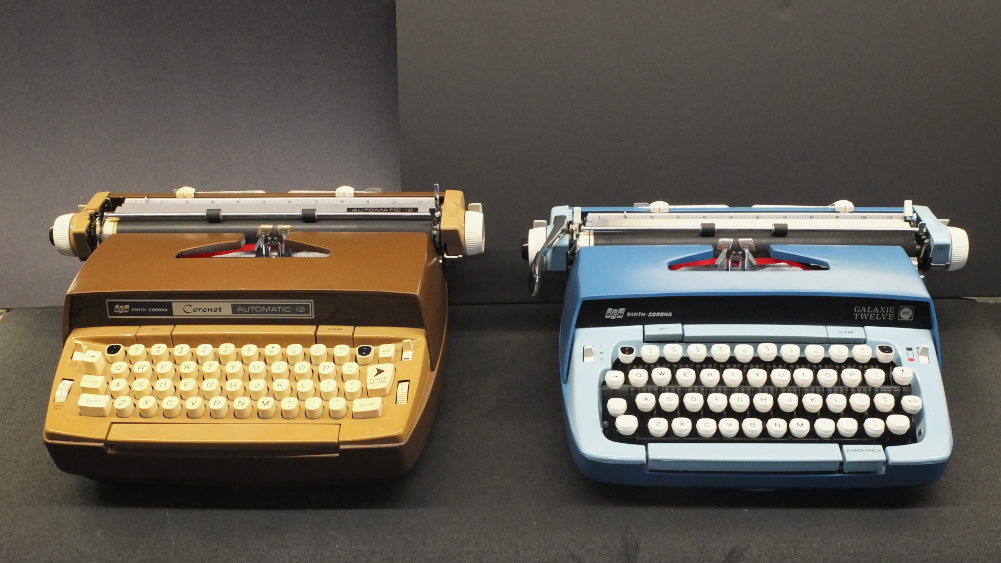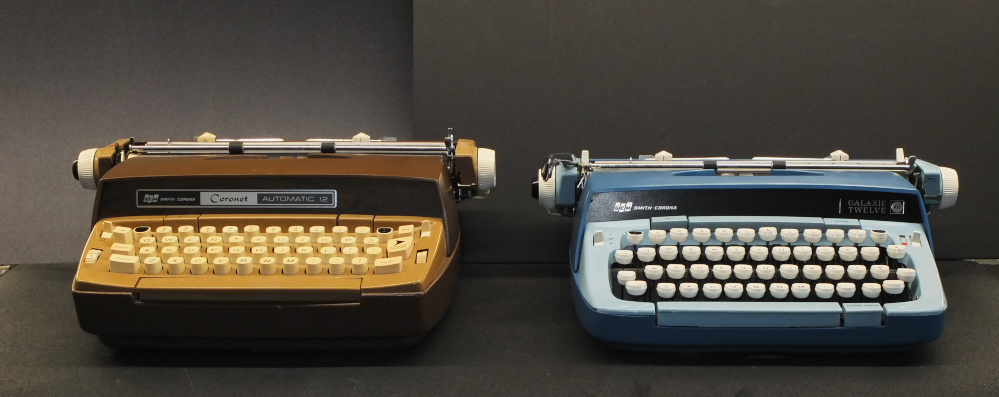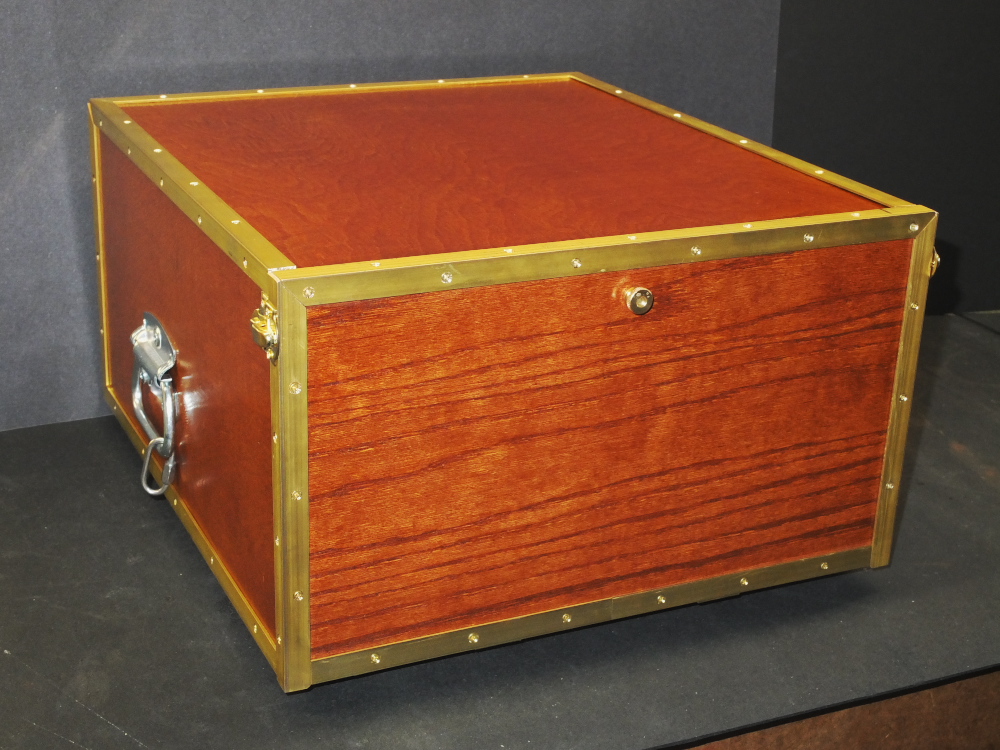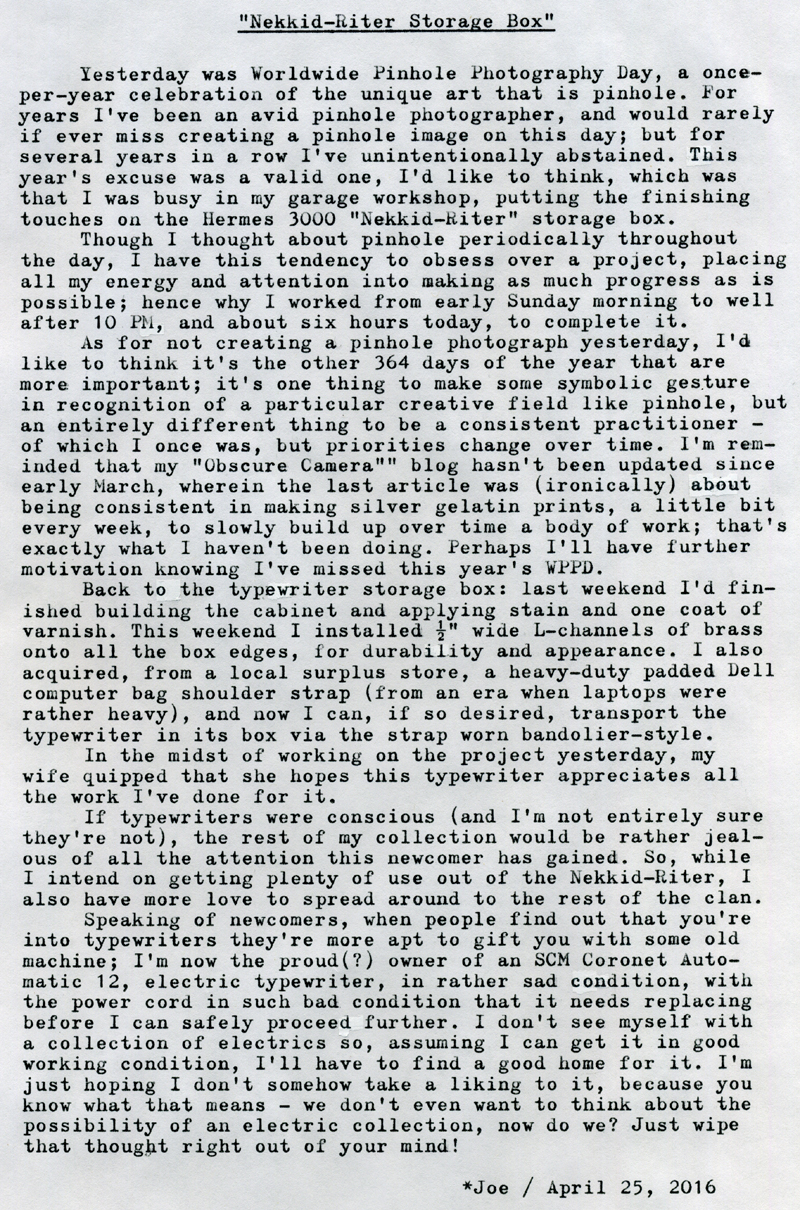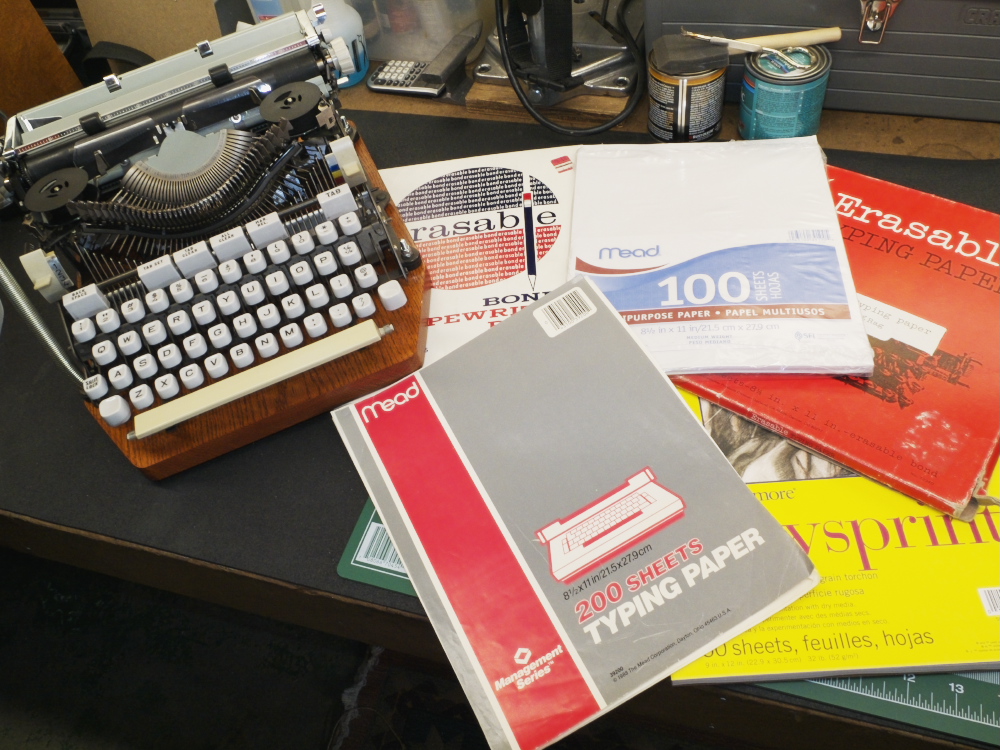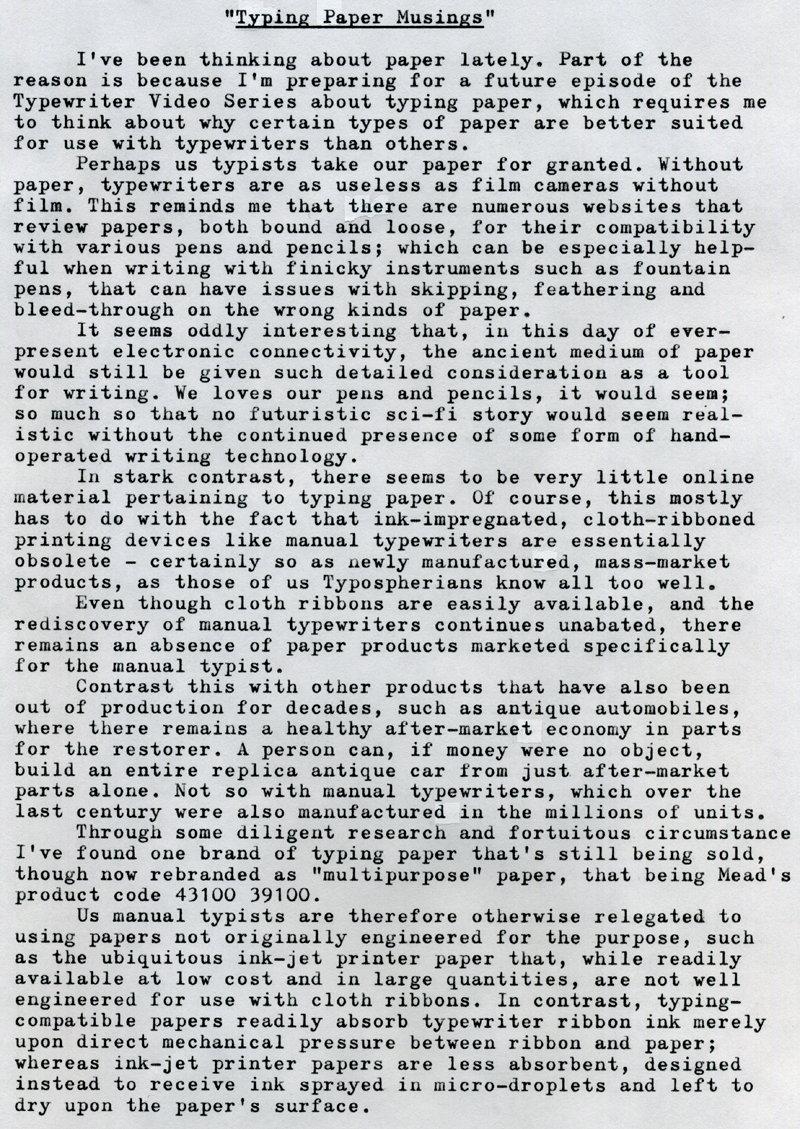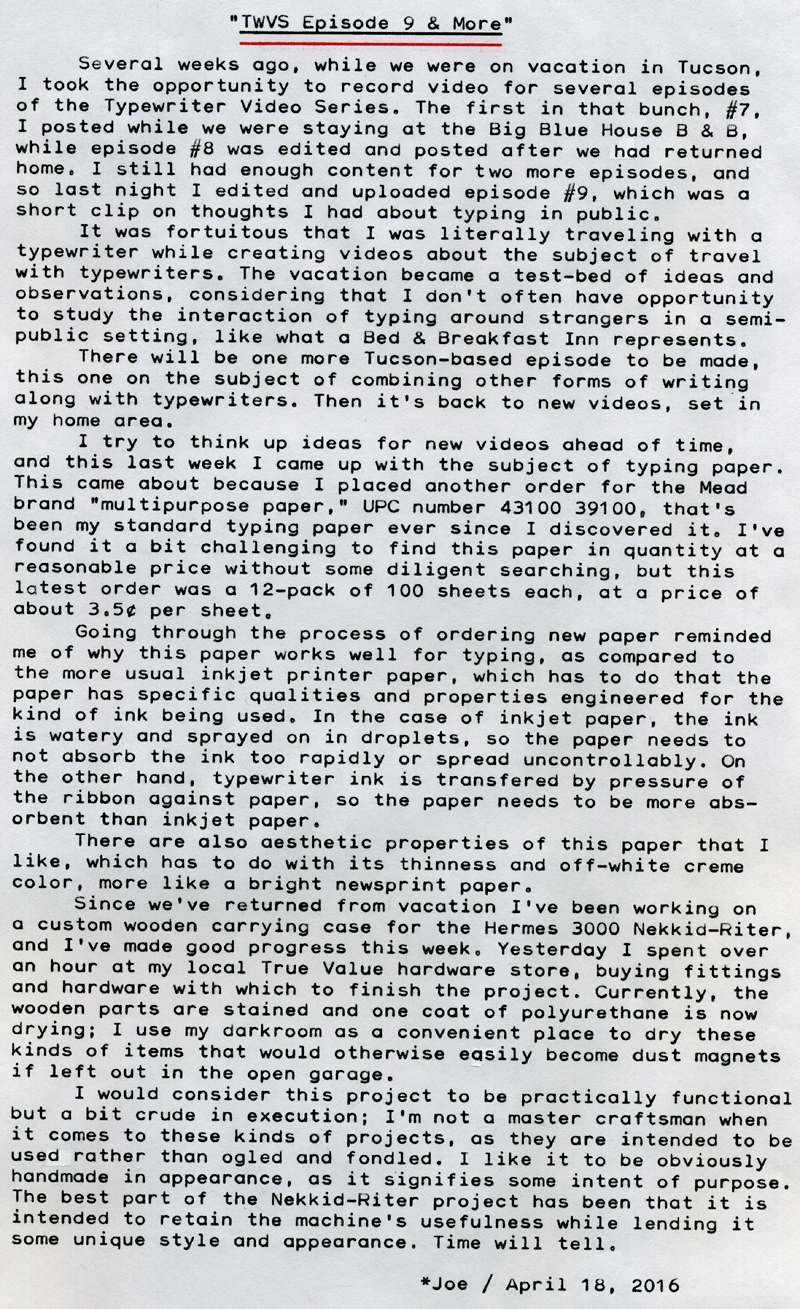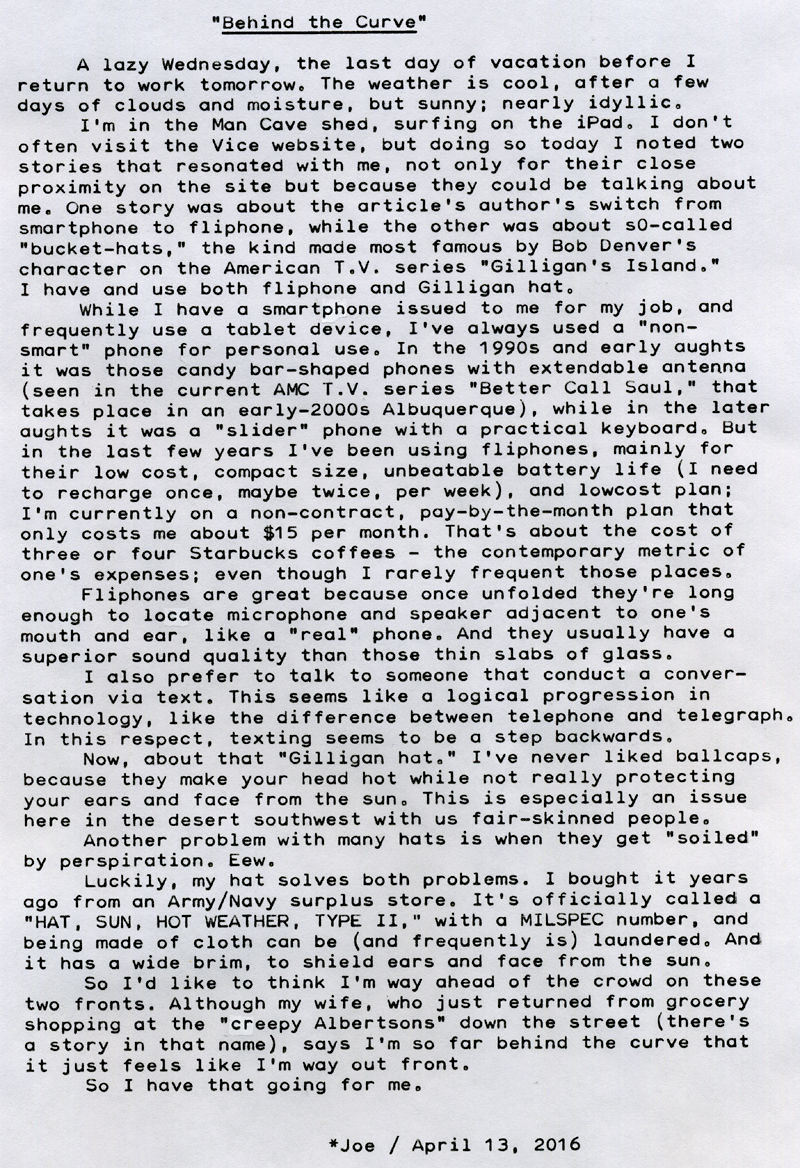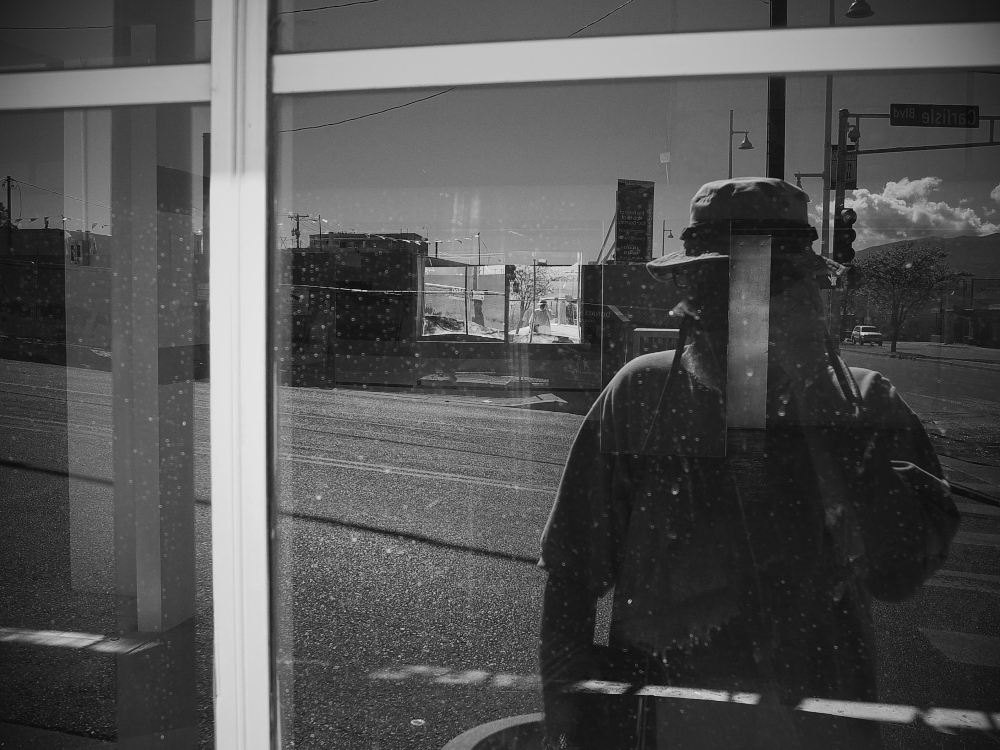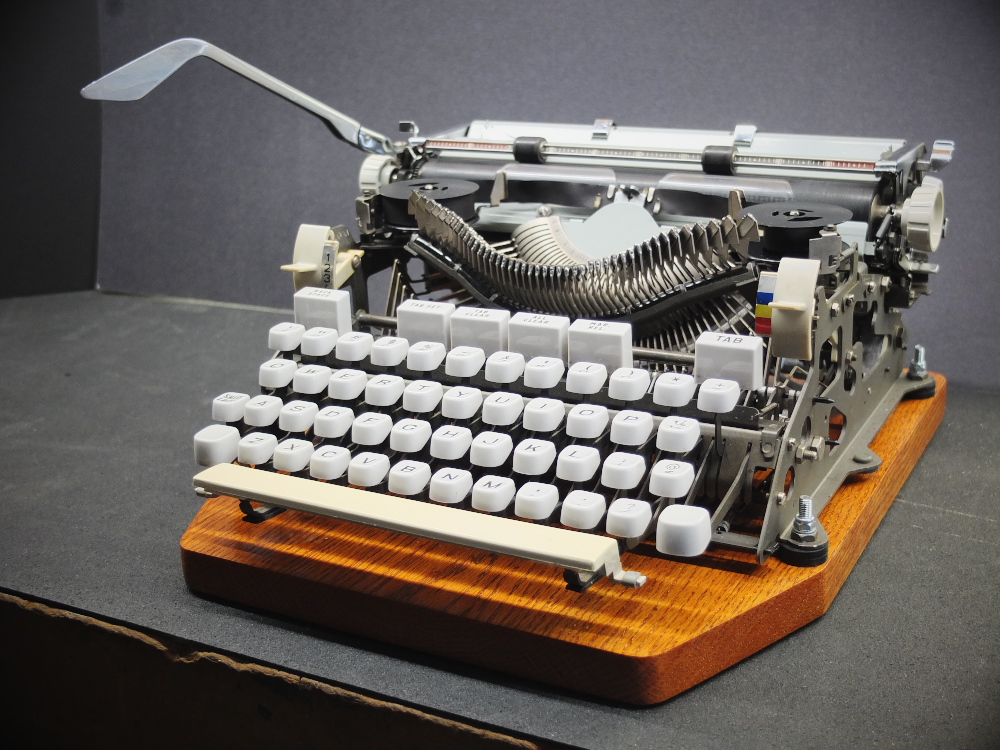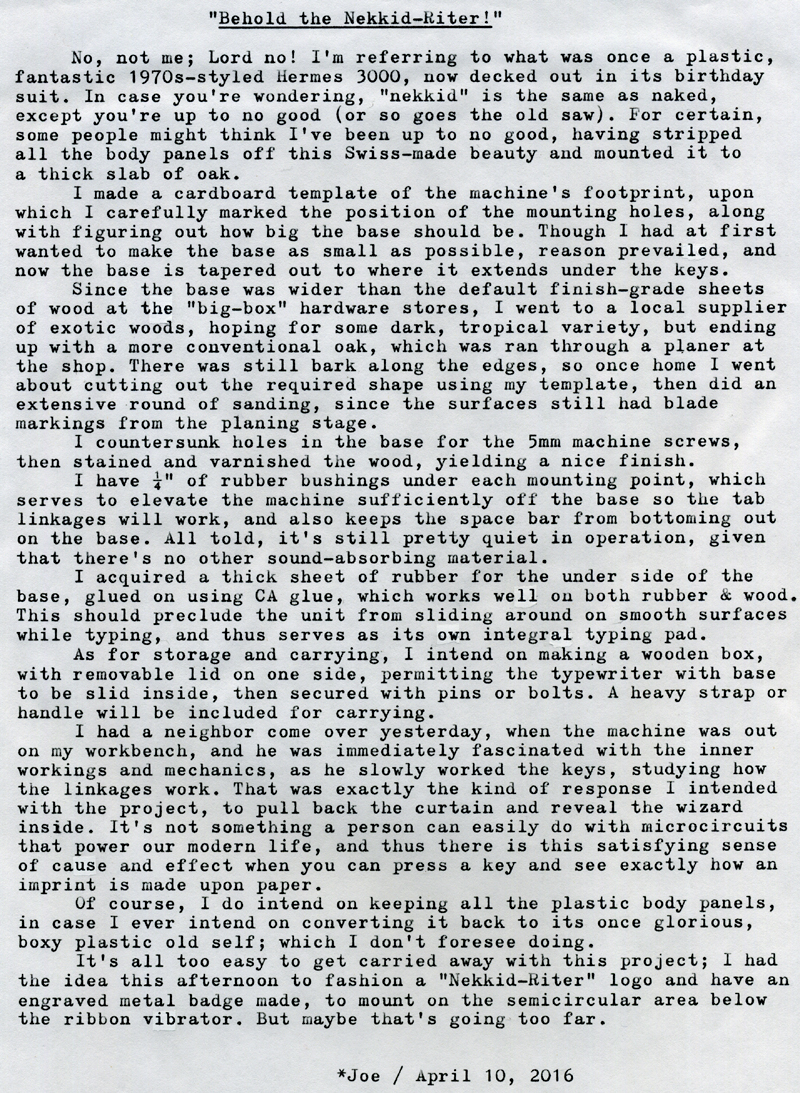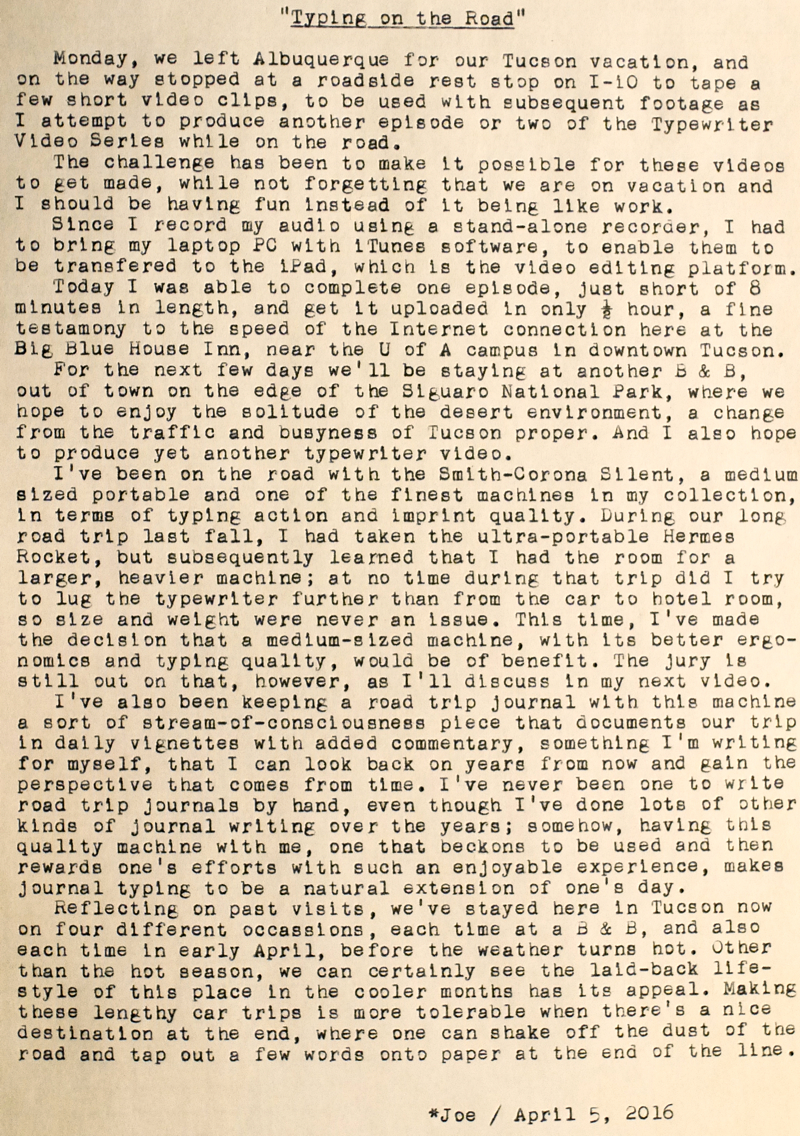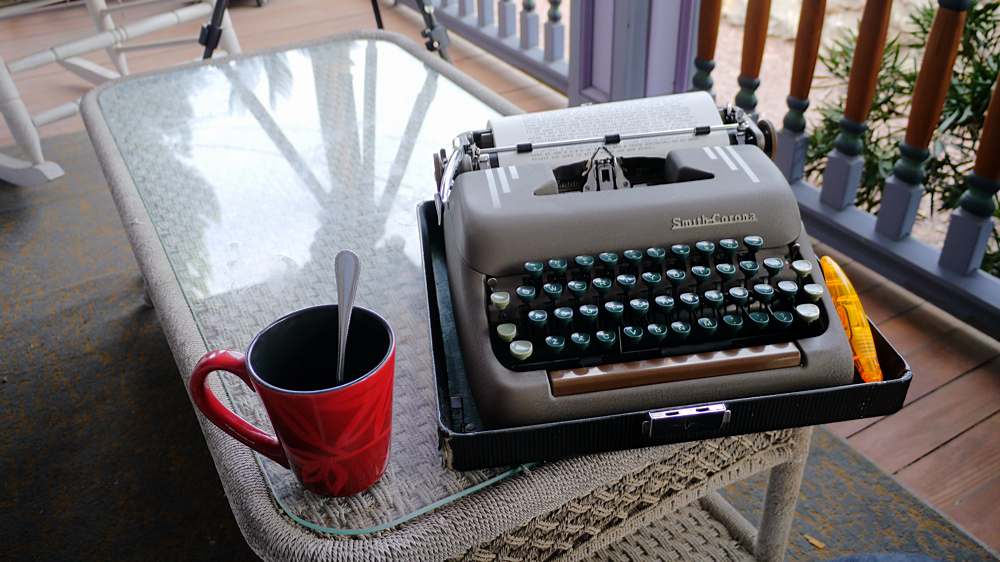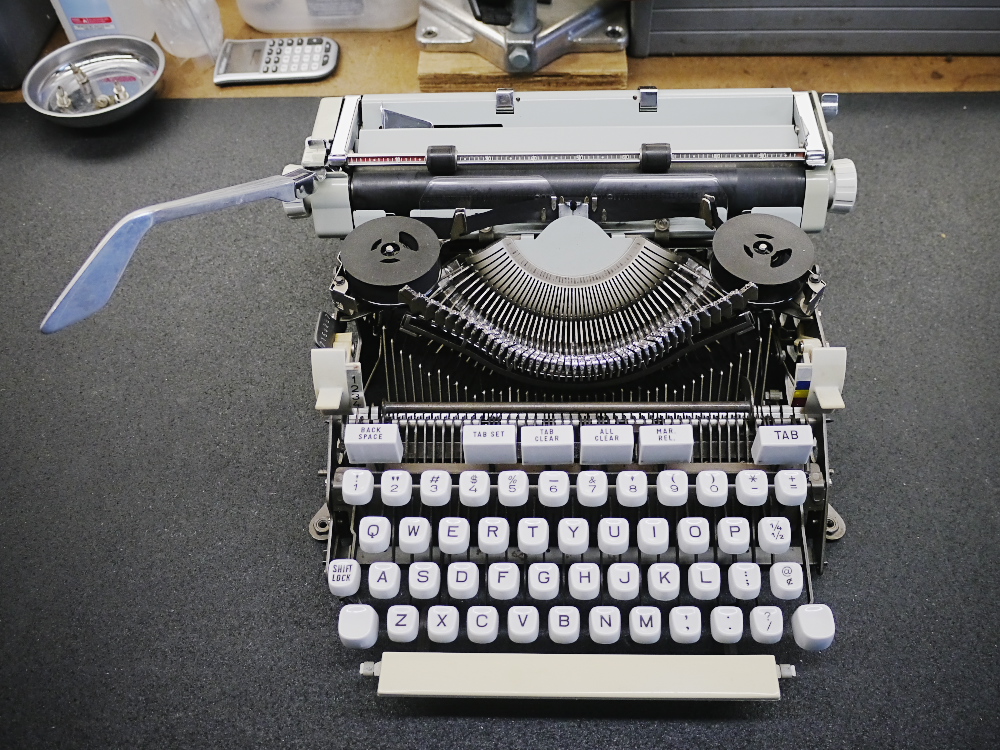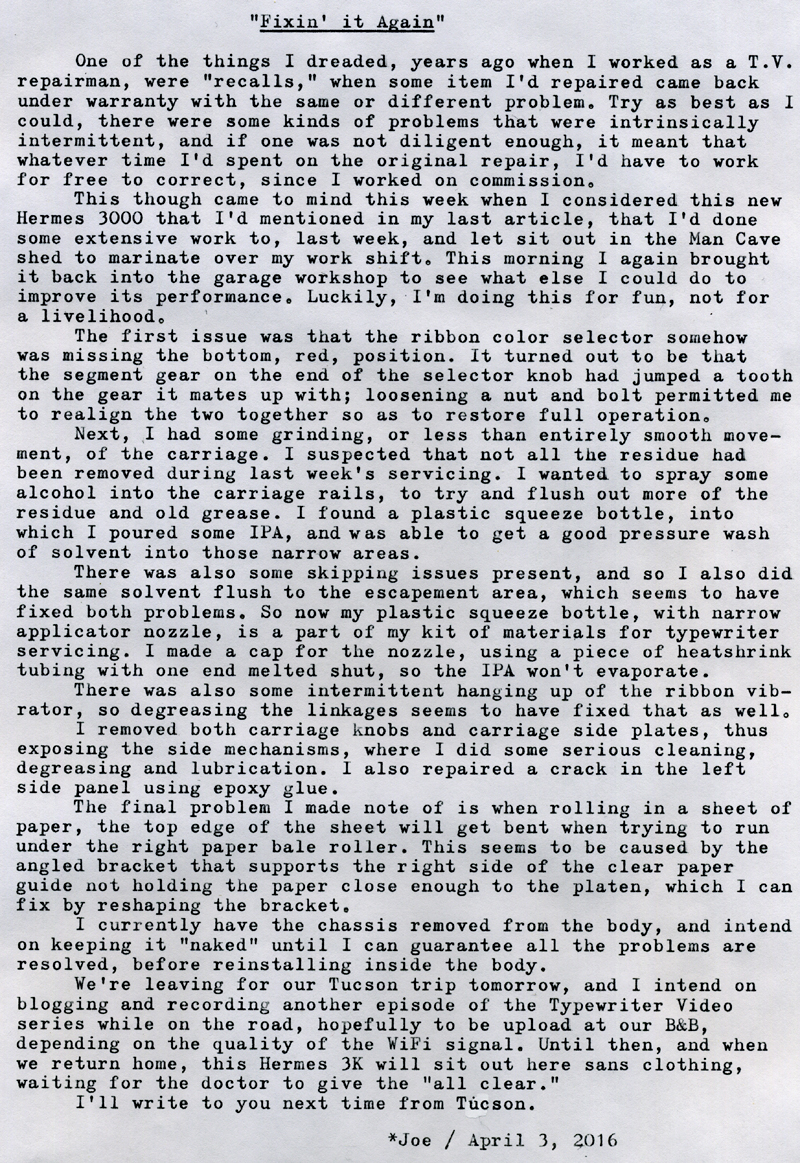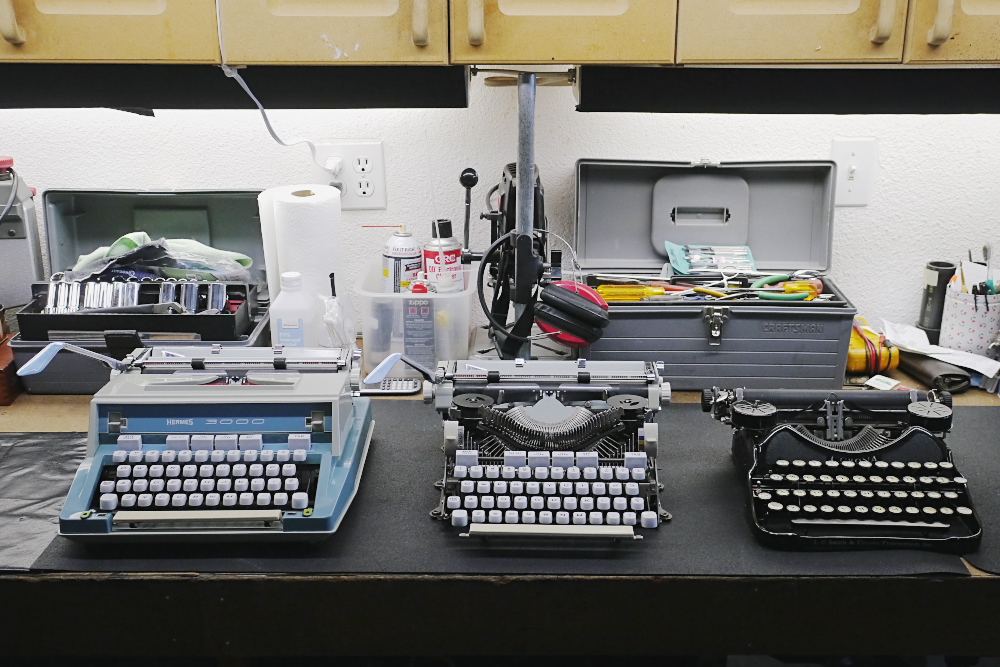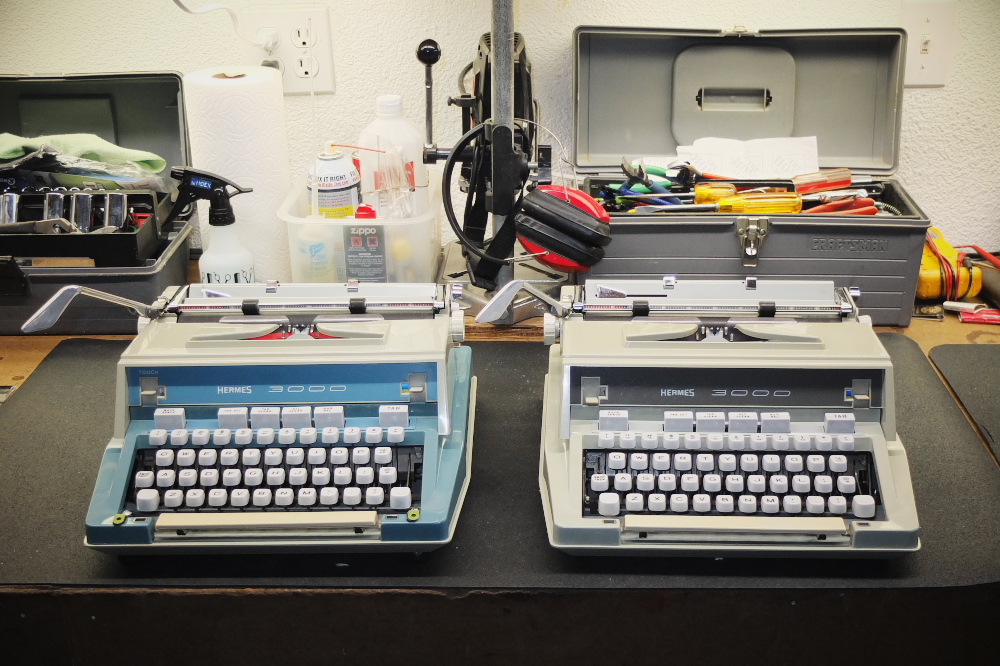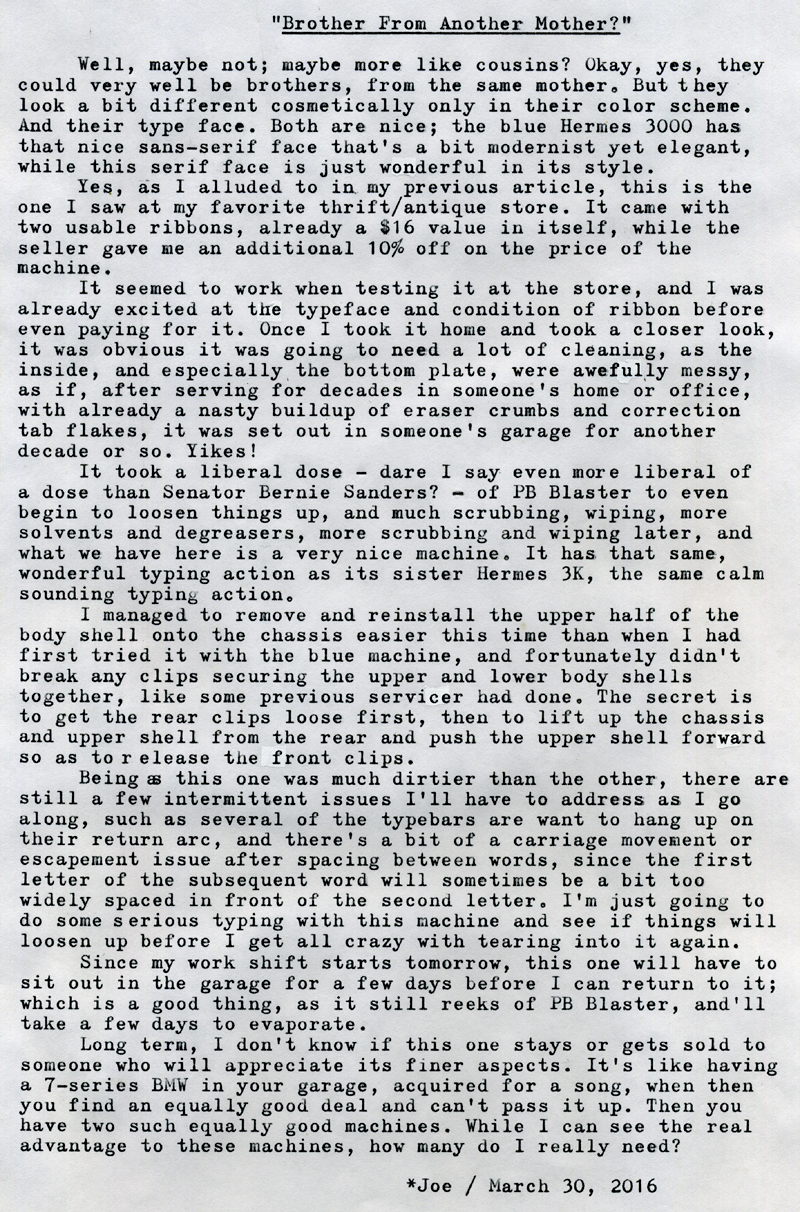TWVS Episode 10 & Taking a Spill
This week's episode of the Typewriter Video Series covers the subject of fitting typewriters into a larger writing lifestyle, and especially with handwritten notes and rough drafts.
Meanwhile, the following blog article was inspired by a little incident last night involving my Webster XL-747 portable typewriter.
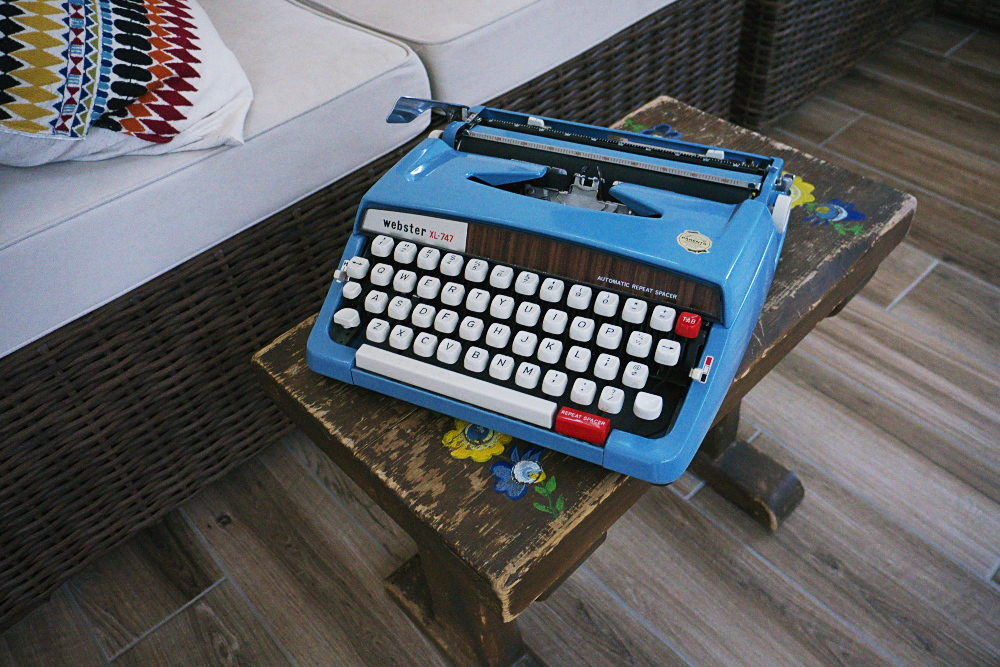
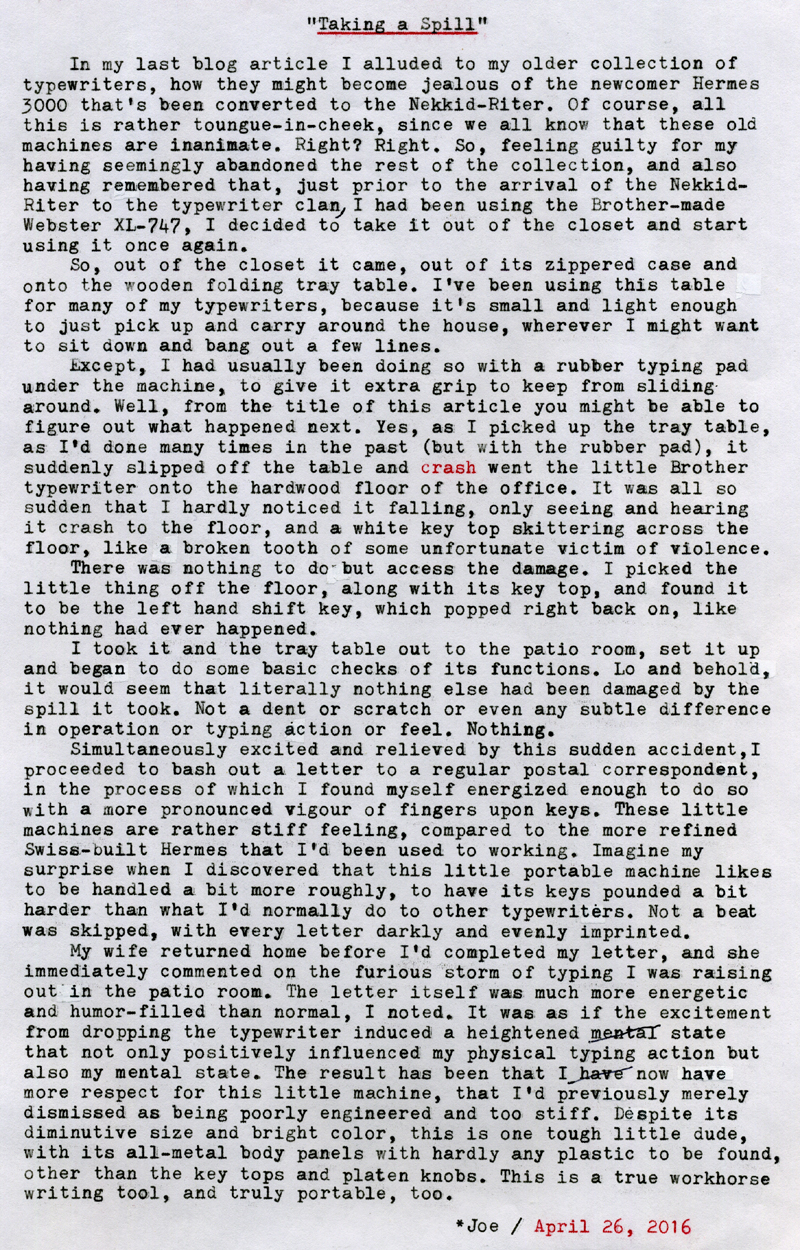
Post-Script: Certainly those Hermes and Olympias are more refined writing tools than the diminutive ultra-portables like the Webster. What matters most importantly to me are typing action and quality of imprint. While the Webster has a nice, dark imprint, its typing action was much stiffer than the bigger machines, yet I kept wanting to make it a favorite among my collection because of its small size, bright color and that it has the repeat spacer feature. Now, after last night's episode, I really do have a newfound respect for it. While those European models mentioned previously might be more refined, they would not have survived a drop to the floor without suffering extensive damage, I'm almost certain, if for no other reason than their heavier weight and, in the case of the newer body style of Hermes 3000, the extensive use of plastics in the body panels.
My enthused typing that followed was a watershed moment for me in my relationship with typewriters as writing tools. Never before had I experienced an excited, emotional period that also had with it an exuberant physical response. It was that more energetic typing action on my part that fueled my mind to break free from convention and write more spontaneously, almost conversationally. Since the letter was private, and has already been posted, I can't share it with you; but perhaps at some point in the future I'll get in the same frame of mind and post a typecast in the same vein.
While recording practice scenes in my Man Cave shed for this latest video, I happened upon the idea of writing sheds and their relationship with typewriters. This I think will be excellent subject matter for a future video in the series.
Typecast via Webster XL-747.
Labels: Hermes 3000, Man Cave, Neet notebooks, Nekkid-RIter, Olympia, Tucson, Typewriter video series, Webster XL-747, You Tube
